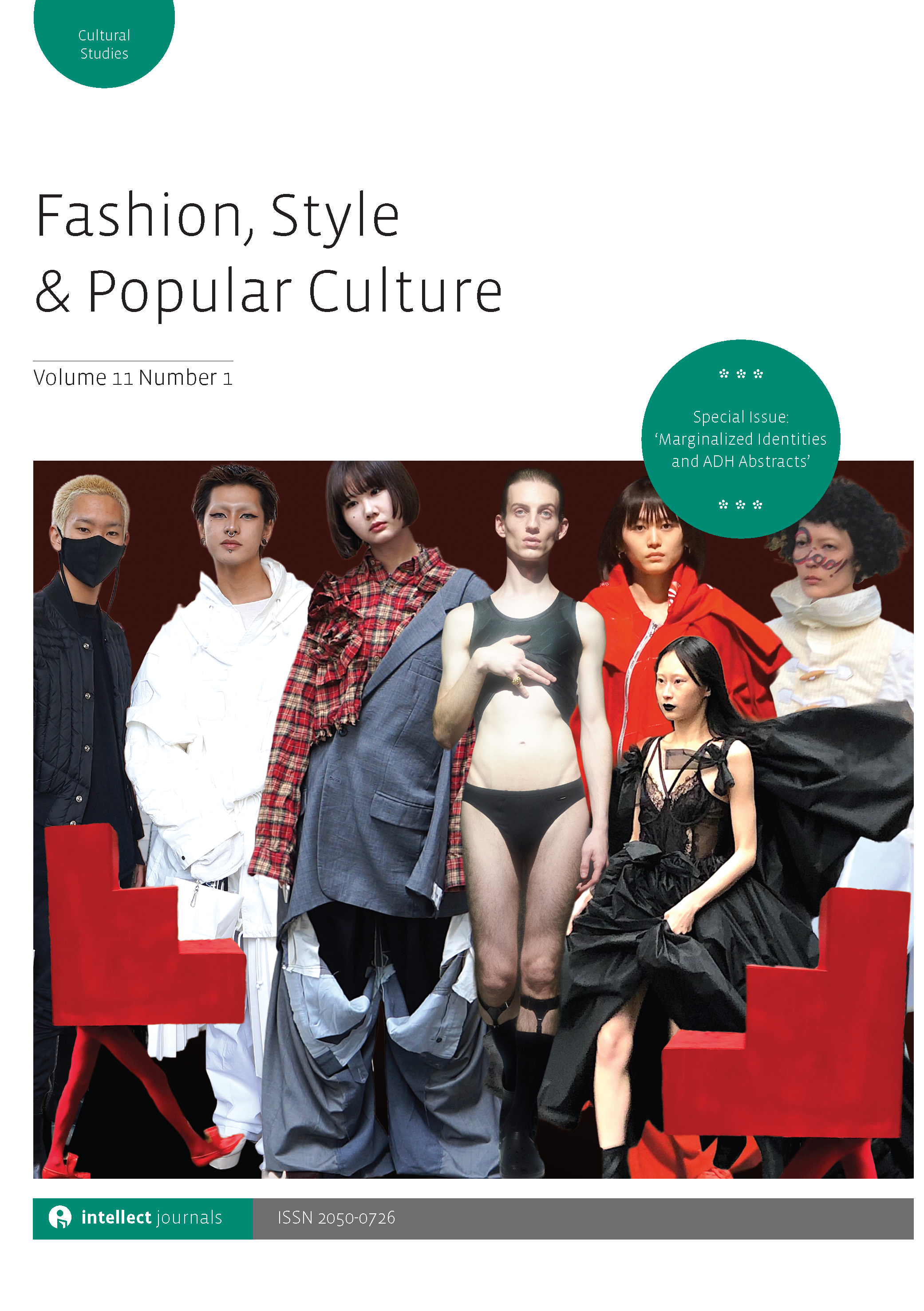
Full text loading...

In this article I critically examine the history of nylon stockings in the United States through the lenses of race and gender. Drawing on visual and material culture examples related to nylon and nude colours, I show how whiteness was standardized and presented as the unmarked norm. Employing an intersectional feminist approach, my archival research expands the narrative beyond these exclusionary practices, highlighting how in ensuing decades individuals and companies marketed and crafted nylon foundationwear for a wider range of consumers. These examples offer a vital counter-history to nylon’s normalization of bodies and mass production that mobilized a standard ideal of womanhood as white, thin, heterosexual and cisgender. The legacy of the creation of ‘nude’ colours that standardize whiteness as the norm can still be seen today in foundationwear branding and everyday items like bandages. However, this has not gone unchallenged and there are increased efforts to address this, particularly among Black-owned businesses like gc2b, Nude Barre and Browndages. It is important to historicize the emergence of standard practices, such as singular definitions of nude and limited sizing practices, and how they serve to reinforce norms of racialized gender. Deconstructing these practices and critically examining less documented alternatives uncovers and addresses embedded power structures within standardization.

Article metrics loading...

Full text loading...
References


Data & Media loading...

Publication Date:
https://doi.org/10.1386/fspc_00225_1 Published content will be available immediately after check-out or when it is released in case of a pre-order. Please make sure to be logged in to see all available purchase options.